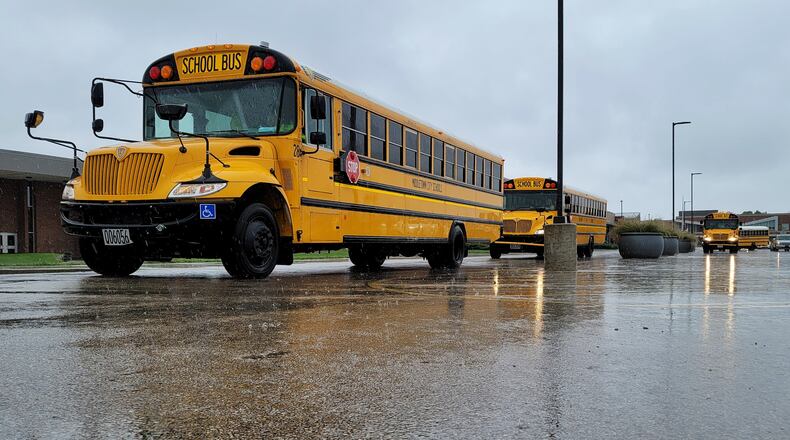The tough-to-fill driver jobs in even the best of times are now drawing markedly less interest with the accompanying health concerns and stresses accompanying recent upticks of the coronavirus delta variant.
Credit: Nick Graham
Credit: Nick Graham
Even Gov. Mike DeWine has recently weighed in on the possibility of the Ohio National Guard coming to the aid of needy school districts by providing drivers and state officials said they are reviewing the option.
“It is a unique idea and we would consider it (National Guard assistance) as an option for a short-term solution,” said Middletown Schools Business Manager Eric Sotzing.
“Unfortunately, it is a national problem and there is no quick solution to filling the gap in drivers needed,” said Sotzing, whose city school district enrolls 6,300 students of whom 3,300 take school buses to and from school.
Credit: Nick Graham
Credit: Nick Graham
“We are three routes short of being completely staffed for our current number of routes or roughly a 6% vacancy rate. If we include the additional substitute drivers needed, that rate increases to a 16% vacancy rate,” he said.
At the 10,000-student Fairfield Schools, the district uses 75 drivers to transport about 6,800 students each school day, but currently, driver absences are averaging about 12 to 14 per day, said Lance Perry, director of business operations.
“Currently, we have sub bus drivers that fill in for staff that are off, for any reason. At this time, we are keeping up with demand with subs and other internal processes,” said Perry but added “recruitment of school bus drivers is an ongoing task annually.”
Some local school systems, which under state law must also provide busing services for private school families, are considering raising the hourly pay rate for drivers. But many school districts, which pay private busing companies for use and maintenance of the vehicles, are locked into multi-year transportation contracts making flexible, pay-hike adjustments in the short-term problematic.
“Our school bus drivers and staff are unionized and we are in the second of a three-year contract. Wages are set through this process and we have not had any discussions to date in regards to other incentives,” said Perry.
Mike Holbrook, superintendent for the 10,000-student Hamilton Schools, said his district has “certainly not been immune to bus driver shortages.”
The increasingly dire shortages ― and domino-effects of late arriving and departing students ― has been “a source of incredible frustration,” said Holbrook.
“Currently, we are down to 46 permanent drivers and 5 substitutes, essentially 11 drivers short. Hamilton Schools have 7,500 eligible student bus riders and transport 5,000 students on average per day.”
“When drivers are out sick or for other reasons, the district must double-up bus routes due to a lack of substitute drivers. This causes buses to arrive late at stops, which translates into students arriving late to school,” he said.
Hamilton ― along with other area districts ― battled similar driver shortages during last school year, the first full school calendar in the shadow of the pandemic.
In 2020-2021, the district increased starting hourly wages by nearly $2 per hour, and if more experienced drivers applied for positions, all past experience was considered regarding initial salary. Additionally, a $200 signing bonus is also offered for new hires.
All Hamilton drivers, including substitute drivers, earn benefits — insurance, sick days, personal days, etc. ― after 60 days due to the fact the district runs its transportation department internally and does not contract the service out to a vendor, said Holbrook.
Those interested in applying for school bus driver jobs can get more information at local school district websites.
About the Author



